There are ways to stay hidden while traveling by foot, and one that you will not often hear about is using anti-tracking shoes.
What are Antitracking Shoes?
Among the countless anti-tracking methods, the handmade manufacture of anti-tracking shoes has always been a unique approach. Anti-tracking shoes involves altering the sole of a shoe (typically designed with circles, triangles, squares, straight lines, waves, and even the shoe’s brand name), and converting it more tow something that blends more naturally with your environment. The intent, of course, is to throw off pursuers.
Talent, creativity, and craftsmanship are all required to design and create something that could really work on a specific substrate to throw off a tracker. The portion most applicable is the sole, the area which is responsible for what we refer to as “regularity“ in tracking terminology.

Why Anti-Tracking?
The goals behind making anti-tracking shoes can vary, but include:
- to conceal, or at least minimize, the regularity of the sole
- to disguise your tracks (for example, by producing animal tracks through the application of hooves under the sole)
- to leave a different direction of travel (by mounting, in an opposite way), the whole sole to the upper of each shoe
The final aim, however, is to leave little or no traces at all.
Nonetheless, as we will soon see, the perfect pair of anti-tracking shoes for every terrain simply does not exist. The variable factors connected to the soil are what determines the effectiveness of the anti-tracking shoes you make and wear.
Examples of Anti-Tracking Shoes
As depicted in the photos below, the variety of anti-tracking shoes or boots can vary, from the African content to contemporary Escape and Evasion strategies, from anti-poaching to just pure entertainment. You name it.
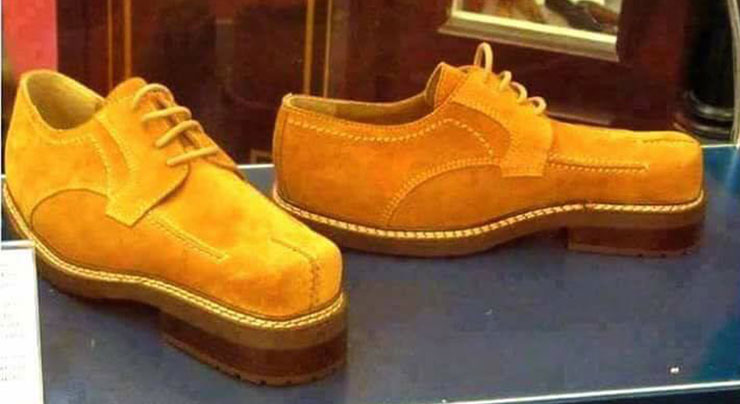
Take, for example, the legendary Selous Scouts during the Rhodesian Bush War and the unconventional warfare applied in that specific context.
The traditional olive drab combat blouse and trousers designed for fighting on the northern European plain between Russia and Germany were discarded for the more functional camouflage t-shirts, shorts, and canvas sneakers ideal for fighting in the bush.
https://sofrep.com/news/bush-war-tactics-and-isis-forging-the-american-scouts/
As you can see in the pic below, Selous Scouts used to wear shoes with filed-off soles (sneaker type). This ended up being extremely efficient to kind of “shuffle” their own tracks with those left by insurgents, who wore the same type of flat shoes at that time. Powerful, easy to achieve, and smart.
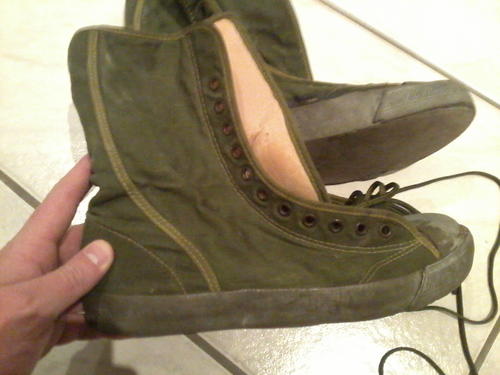
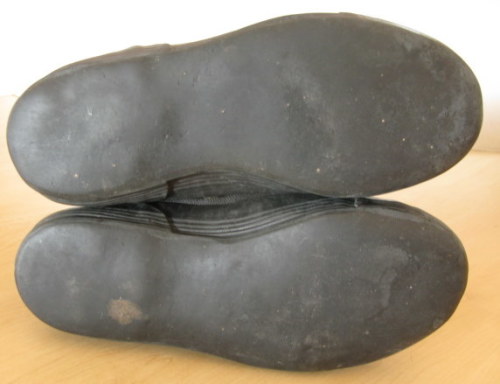
Below is a picture of shoes from the prohibition era, used to disguise tracks through the woods to making moonshine.
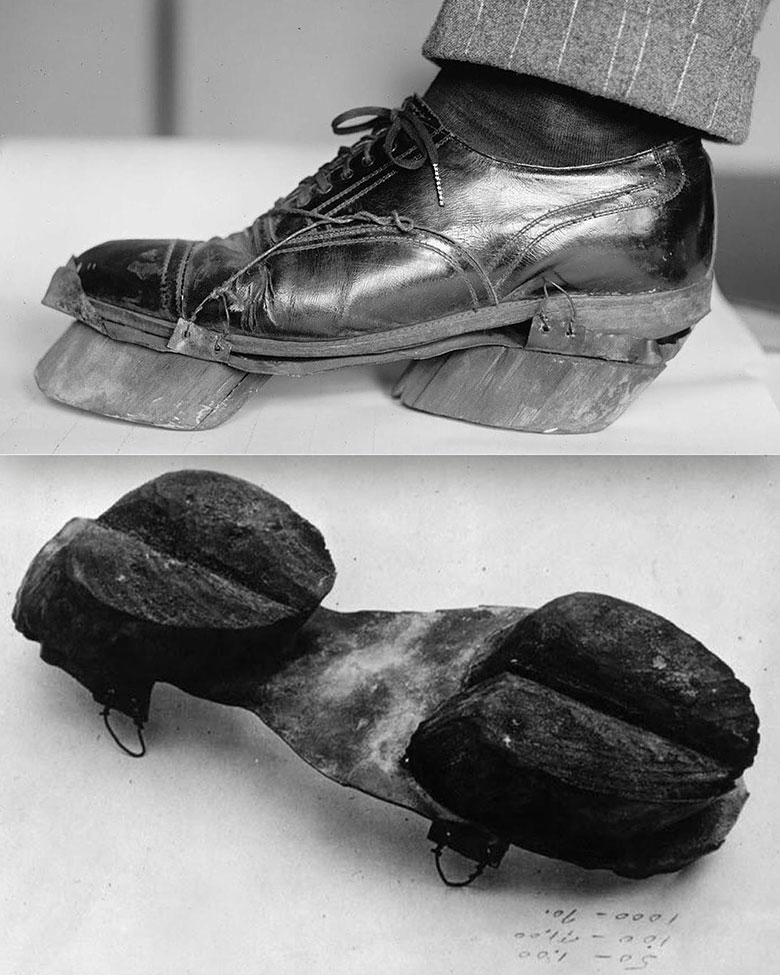
Real World Use Today
Currently, the main uses for anti-tracking shoes lies with anti-poaching strategies. Poachers, in fact, regularly take advantage of such “tools of the trade” in order to:
- place snares to trap animals,
- evade anti-poaching units,
- move through national parks or reserves in a stealthy manner, and
- conceal their own tracks once they determine they are being followed.
Are these shoes really effective? The question is a legitimate one, and to answer it you must examine the effect they produce on the ground, as each action triggers a consequential reaction. Soil makes no exceptions.
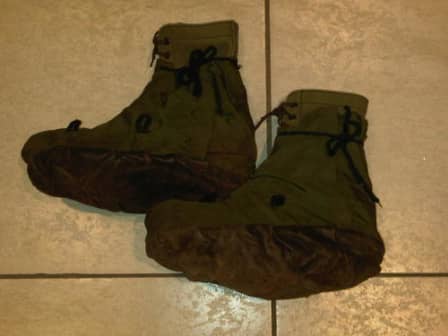
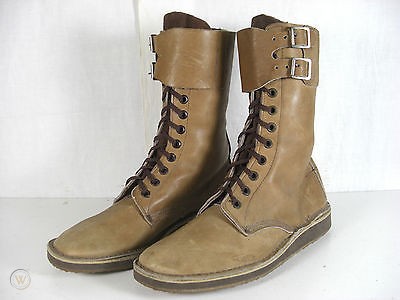
How I Made Anti-Tracking Shoes
The first thing I did before building my “stealth” shoes was to…
Considered the Environment
As mentioned before, the effectiveness of any anti-tracking shoes depends is determined by the terrain you are building them for. Each terrain requires the right soles if the goal is to leave minimal sign of your passage.
By saying this, the first thing you have to do is to scan the area you are in, to carefully observe the type of substrate you are walking in.

Is the soil dry or damp? What kind of debris is there? Is everything covered by fallen leaves? Twigs? What are their dimensions?
Ask yourself these types of questions. By doing so you are collecting data on what your antagonist might use to find and defeat you. By studying your opponent you will know what kind of anti-tracking shoes you must make.
Blended with the Ground
Before making my shoes I considered the environment. Specifically, I looked at:
- the forest I was operating in – mainly of oak and hazelnut trees,
- my total body weight (around 119 pounds), and
- my way of moving through the woods and, generally speaking, my way of walking.
As the soil was mainly composed of fallen branches and oak leaves due to some recent storms, I grabbed some of them of proper length to cover – with abundance – my whole foot. You never want tear or cut them off, otherwise the so called “aerial spoors.” That will immediately give away your presence inside the area (to an expert eye).
By making the print of my track larger than the shoe itself I could have additional room in case everything moved a bit as I walked.
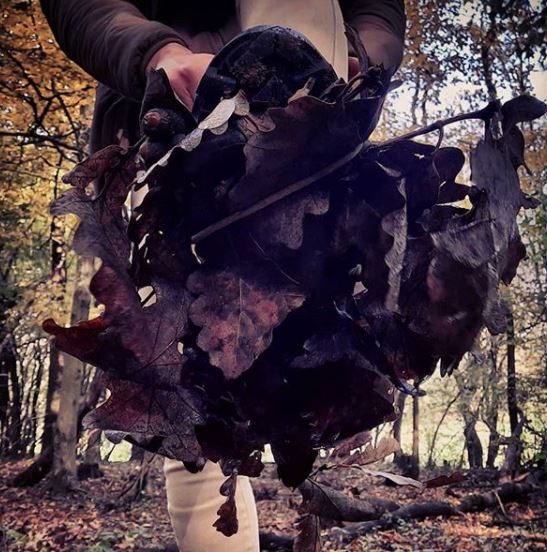
Made Them Sturdy and Effective
After careful selection of the proper branches to use, I started to wrap them to the sole of my boots, with some Paracord (a prepper’s favorite cordage). I just made sure not to leave any uncovered area of the paracord itself, otherwise known as “spotting.” Spotting, especially on nude terrain, the shape of a line is a mistake to avoid at any cost.
In this manner, the whole branch will adopt the form of an arch, which corresponds to the sole.
Reality vs Expectations
After making few steps to get familiar with the new footprint, it came the time to test my anti-tracking shoes in this forest. The result overcame my expectations.
Not only were the tracks I left behind barely visible, but the noise I produced was distinctly more blended. In fact, by doing just few, soft steps and stopping, I broke the distinctive sound of a two-legged individual who moved into the wood.
See my video of these “shoes” here:
After making a U turn, I came back to the starting point in order to observe the whole effect on this substrate. My anti-tracking shoes seemed to just gently move and push the leaves and debris. The general effect was that the environment seemed untouched.
Downsides
Beyond the ease of the whole process, covering a considerable distance by wearing this sort of “natural coverage” has some downsides:
- it reduces your natural speed;
- you may lose some debris on your way;
- by losing part of the material, the paracord will pop up soon and leave distinctive signs on the terrain; and
- each change of the substrate requires a specific coverage of your sole (and, consequentially, of your pattern).
Simple as it is, you can train yourself to make better and better anti-tracking shoes, but to an expert eye, your strategy will eventually be detected. That, of course, is to an expert eye. Most people do not have an expert eye, so anti-tracking shoes will work effectively to fool 99.99% of the population.
Additional Note by the Author: This technique, even if largely covered in several books dedicated to tracking and anti=tracking, may be employed by potential poachers or other ill-intentioned people. It’s up to each one’s common sense making the best use of it.

5 comments
I literally laughed out loud reading this ridiculous article. As someone who has spent the better part of 15 years tracking illegal aliens and drug smugglers on the Mexican border, I swear to you this article is totally useless for anyone that contemplates avoiding detection, regardless of the terrain. Any tracker with a modicum of experience, and not even an expert, can identify tracks of individuals and groups using shoes or coverings that mask tread marks. Experienced trackers can distinguish male from female tracks and between adults and juveniles. There are many more clues than just the foot/shoe print.
Maybe you missed this part: Most people do not have an expert eye, so anti-tracking shoes will work effectively to fool 99.99% of the population.
It is pretty obvious that ANY TRACKER WITH A MINIMUM OF EXPERIENCE can easily detect any deceiptive technique. In other pieces I wrote on Tracking you can find A LOT of this.
Have a good day, Sir.
In a simple but ingenious trick, mexicain cartel members wear homemade “carpet shoes” over their boots as they trek through the desert trails on the U.S. side of the border. The soft rug soles leave no recognizable footprints, so Border Patrol agents can’t tell what direction drug runners are traveling or how many there are.
Carpet shoes may mask the tread pattern of the shoe temporarily, but they still leave a track that is different than the surrounding soil. Heavily worn carpet shoes (aka booties) allow the exposed portion of the shoe’s tread pattern to show through and BP agents will key on this fact to help determine if that member of the smuggling group can be found up ahead where other agents are cutting for sign. Bottom line: carpet shoes/booties do not prevent an experienced tracker from locating you. You can still estimate the size of the group, distinguish between male, female and children, their rate and direction of travel, and determine if the group is carrying significant weight loads. The article is still garbage. Don’t pin your survival on it.